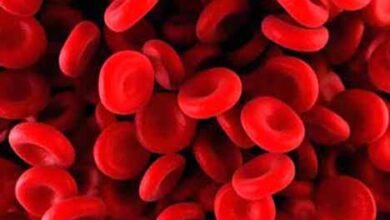
जीव विज्ञान से संबंधित-100.
| 1. Who discovered the bacterium first? = Leuvenhoek.
2. Who named the word hormone? = Bellis and Starling. 3. Which disease is related to the respiratory system? = Pneumonia and T.B. 4. What is the blood pressure of a healthy person? = 120/80. 5. The amount of glucose in the blood controlled? = Insulin. 6. A disease spread by bacteria is? = Smallpox. 7. Which disease is caused by bacteria? = Tuberculosis. 8. Influenza disease is caused by? = Virus. 9. A deterministic animal [Warm-Blooded Animal] is? = Bat. 10. How many bones are there in the human skull? = 08. 11. Red color in blood is due to? = Hemoglobin. 12. Antigen is a substance which? = Promotes the formation of antibodies. 13. Amoeba takes food with the help of = Pseudopodia. 14. Which organ is commonly affected by aflatoxin food poisoning in humans? = Liver. 15. What is the cause of Japanese encephalitis? = Virus. 16. Where is the pituitary gland located in the body? = At the base of the Brain. 17. Bile infusion is stored in? = Gall Bladder. 18. What is the special requirement for the digestion of food in the stomach? = Enzyme. 19. Whose digestion does the saliva [Saliva] come out from the mouth? = Starch. 20. Which acid is present in the human stomach? = Hydrochloric Acid. 21. Protein is converted into which substance in the process of digestion? = Amino Acid. 22. Which is the organ that stores carbohydrates in the form of glycogen in the human body? = Liver. 23. Whom is bile produced? = Liver. 24. How long does it take for the heart to beat once in the human body? = 0.8 sec. 25. Heart beats per minute in a healthy human being? = 72times. 26. The blood pressure (systolic) and diastolic of a healthy human being is? = 120 mm and 80 mm. 27. Where are the genes located? = Chromosomes. 28. How many parts does the stomach have? = 03. 29. Where does maximum absorption of digested food take place? = Small Intestine. 30. The largest gland found in the body is? = Liver. ======== ========= ========== 1. जीवाणु की खोज सर्वप्रथम किसने की थ? = ल्यूवेनहॉक. 2. हॉर्मोन शब्द का नामकरण किसने किया था? = बेलिस एवं स्टारलिंग. 3. श्वसनतंत्र से संबंधित कौन-सी बीमारी होती है? = निमोनिया और टी० बी०. 4. एक स्वस्थ मनुष्य का रक्त चाप होता है? = 120/80. 5. रक्त में ग्लूकोज की मात्रा नियंत्रित रहता है? = इंसुलिन. 6. बैक्टीरिया से फैलने वाला रोग है? = चेचक. 7. बैक्टीरिया से कौन सा रोग होता है? = तपेदिक. 8. इन्फ्लूएन्जा रोग होता है? = विषाणु. 9. नियततापी प्राणी [Warm-Blooded Animal] है? = चमगादड़. 10. मनुष्य की खोपड़ी में कितनी अस्थियां होती है? = 08. 11. रक्त में लाल रंग किसके कारण होता है? = हीमोग्लोबिन. 12. एन्टीजन (प्रतिजन) (Antigen) एक ऐसा पदार्थ है जो? = प्रतिरक्षी के निर्माण को बढ़ावा देता है. 13. अमीबा किस की मदद से भोजन ग्रहण करता है? = पादाभ (Pseudopodia). 14. मनुष्य में एफ्लाटाक्सिन खाद्य विषाक्तन द्वारा सामान्यतः कौन सा अंग प्रभावित होता है? = यकृत. 15. जापानी एनसेफिलाइटिस का कारक होता है? = विषाणु. 16. पीयूष ग्रन्थि शरीर में किस स्थान पर स्थित होती है? = मस्तिष्क के आधार में. 17. पित्त आसव में संग्रहित होता है ? = पित्ताशय. 18. पेट में भोजन को पचाने के लिये किसकी खास आवश्यकता होती है? = एन्जाइम. 19. मुख से निकली लार [Saliva] किसका पाचन करती है? = स्टार्च (Starch). 20. किस अम्ल की उपस्थित मानव के पेट में होती हैं? = हाइड्रोक्लोरिक अम्ल. 21. पाचन क्रिया में प्रोटीन (Protein) किस प्रदार्थ में बदल जाता है? = एमीनो अम्ल. 22. वह कौन सा अंग है जो मानव शरीर में ग्लाइकोजेन के रूप में कार्बोहाइड्रेट को जमा कर रखता है? = यकृत. 23. पित्त किसके द्वारा पैदा होता है? = यकृत (Liver). 24. मनुष्य के शरीर में हृदय को एक बार धड़कने के लिये कितना समय लगता है? = 0.8 सेकंड. 25. स्वस्थ्य मनुष्य में प्रति मिनट हृदय स्पन्दन होता है? = 72 बार. 26. स्वस्थ्य मनुष्य का रक्त चाप (सिस्टालिक) व डाइस्टालिक होता है? = 120 एम०एम० व 80 एम०एम०. 27. जीन कहां स्थित होते हैं? = गुणसूत्रों में. 28. आमाशय के कितने भाग होते हैं? = 03. 29. पाचित भोजन का सर्वाधिक अवशोषण कहाँ होता है? = छोटी आँत. 30. शरीर में पाए जाने वाली सबसे बड़ी ग्रन्थि होती है? = यकृत (Liver).
|





